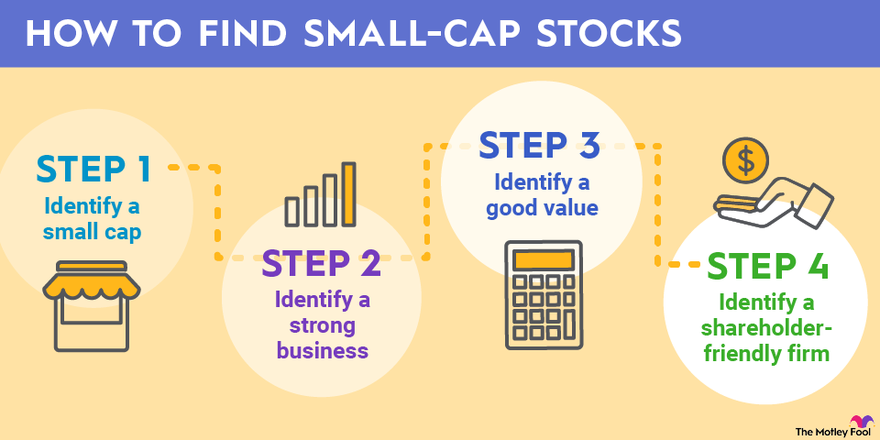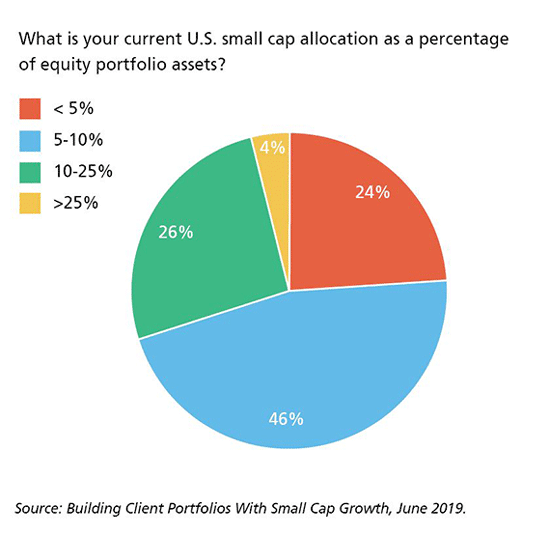Here’s an introduction for an article about investing in small-cap stocks:
**Option 1: Focusing on potential and risk**
> Small-cap stocks, those issued by companies with a market capitalization under $2 billion, often offer enticing growth potential. However, they come with inherent risks that require a thoughtful approach. This article explores the ins and outs of investing in small-cap stocks, outlining strategies for identifying promising opportunities while mitigating potential pitfalls.
**Option 2: Highlighting the appeal**
> For investors seeking high-growth opportunities, small-cap stocks often hold a special appeal. These companies, with their smaller market capitalizations, can experience rapid expansion and deliver substantial returns. However, navigating the landscape of small-cap stocks requires a deep understanding of the market and a strategic investment approach.
**Option 3: Starting with a question:**
> Are you looking to diversify your portfolio with potentially high-growth investments? Small-cap stocks, representing companies with smaller market capitalizations, can offer unique opportunities. But with this potential for growth comes increased risk. This article provides a guide to understanding and navigating the world of small-cap investing.
Understanding the Basics of Investing in Small-Cap Stocks
What are Small-Cap Stocks?
Small-cap stocks are stocks of companies with a market capitalization of between $300 million and $2 billion. These companies are typically younger and less established than larger companies, and they may be growing rapidly.
Why Invest in Small-Cap Stocks?
There are several reasons why investors may choose to invest in small-cap stocks:
Higher growth potential: Small-cap companies often have a higher growth potential than larger companies, as they have more room to expand their business.
Potential for higher returns: Because small-cap stocks are riskier than larger-cap stocks, they also have the potential for higher returns.
Diversification: Investing in small-cap stocks can help to diversify your portfolio and reduce your overall risk.
| Advantages of Small-Cap Stocks | Disadvantages of Small-Cap Stocks |
|---|---|
| Higher growth potential | Higher risk |
| Potential for higher returns | Lower liquidity |
| Diversification | Greater volatility |
How to Find Small-Cap Stocks
There are a number of ways to find small-cap stocks:
Use a stock screener: A stock screener is a tool that allows you to filter stocks based on a variety of criteria, such as market capitalization, industry, and financial performance.
Follow industry experts: Many financial analysts and newsletters specialize in small-cap stocks.
Talk to a financial advisor: A financial advisor can help you to develop a personalized investment strategy that includes small-cap stocks.
Evaluating Small-Cap Stocks
Once you’ve found some potential small-cap stocks, it’s important to carefully evaluate them before investing. Consider the following factors:
Financial performance: Look at the company’s financial statements, including its revenue, earnings, and cash flow.
Management team: Assess the quality of the company’s management team and their experience in the industry.
Competitive landscape: Evaluate the company’s competitive position in its industry.
Industry outlook: Consider the future prospects of the industry in which the company operates.
Managing Your Investment in Small-Cap Stocks
Once you’ve invested in small-cap stocks, it’s important to manage your investment carefully.
Monitor your investments: Keep track of the performance of your small-cap stocks and adjust your investment strategy as needed.
Be patient: Small-cap stocks can be volatile, so it’s important to be patient and not panic sell when the market drops.
Consider your risk tolerance: Small-cap stocks are riskier than larger-cap stocks, so it’s important to make sure that they fit with your overall risk tolerance.
How to find small-cap stocks to invest in?

Define Your Investment Strategy
Before you start searching for small-cap stocks, you need to determine your investment goals and risk tolerance. Are you looking for long-term growth or short-term gains? How much risk are you comfortable taking? Once you have a clear investment strategy, you can narrow down your search for companies that align with your objectives.
Identify Potential Sectors and Industries
Small-cap companies often operate within specific sectors or industries. Consider researching sectors that are expected to grow in the future or that are currently experiencing strong demand. This will help you focus your search on companies with the potential for success.
- Emerging Technologies: Consider companies developing innovative technologies in areas like artificial intelligence, clean energy, or biotechnology.
- Consumer Discretionary: Look for companies that provide goods and services that consumers are likely to spend more on in a strong economy, such as retail, leisure, or travel.
- Healthcare: Investigate companies in the healthcare sector, which often benefits from increasing demand for healthcare services and medical advancements.
Utilize Screening Tools and Databases
Several online platforms offer screening tools and databases that can help you identify small-cap stocks based on specific criteria. These tools allow you to filter stocks by market capitalization, industry, financial metrics, and other factors. Some popular options include:
- Finviz: A website that provides comprehensive stock screening and research tools.
- Morningstar: A well-respected financial research firm that offers a variety of screening tools and data analysis.
- Zacks Investment Research: A provider of investment research and analysis that includes a screening tool for small-cap stocks.
Analyze Financial Statements and Key Metrics
Once you’ve identified potential small-cap companies, it’s crucial to thoroughly analyze their financial statements and key metrics to assess their financial health and growth prospects. Some critical factors to consider include:
- Revenue Growth: Look for companies with a history of consistent revenue growth and a positive outlook for the future.
- Profitability: Evaluate profitability metrics like net income margin and return on equity to determine the company’s ability to generate profits.
- Debt Levels: Analyze the company’s debt-to-equity ratio and other debt metrics to assess its financial leverage and potential risks.
- Cash Flow: Examine the company’s cash flow statement to assess its ability to generate cash from its operations.
Conduct Due Diligence and Seek Professional Advice
Before investing in any small-cap stock, it’s essential to conduct thorough due diligence. This involves researching the company’s management team, business model, industry trends, and competitive landscape. Consider consulting with a financial advisor for personalized guidance and investment recommendations.
Does Warren Buffett invest in small-cap stocks?

Warren Buffett’s Focus on Large-Cap Stocks
Warren Buffett, renowned for his investment strategies, primarily focuses on large-cap stocks. He favors companies with strong fundamentals, proven track records, and predictable earnings. His investment philosophy revolves around understanding a company’s intrinsic value and investing in businesses he believes can generate long-term returns.
Berkshire Hathaway’s Portfolio Composition
The portfolio of Berkshire Hathaway, the company led by Warren Buffett, predominantly comprises large-cap stocks. These include well-known names like Apple, Coca-Cola, and Bank of America.
Buffett’s Comments on Small-Cap Stocks
While Warren Buffett doesn’t explicitly rule out investing in small-cap stocks, his public statements and investment choices suggest a preference for large-cap companies. He has mentioned that he prefers to invest in businesses he thoroughly understands, and small-cap companies might not always meet this criterion.
Risks Associated with Small-Cap Stocks
Investing in small-cap stocks carries inherent risks:
- Increased Volatility: Smaller companies tend to experience more volatility in their stock prices due to their smaller market capitalization.
- Liquidity Concerns: Small-cap stocks may have limited liquidity, making it challenging to buy or sell them quickly.
- Higher Risk of Bankruptcy: Smaller companies are generally less diversified and more vulnerable to economic downturns or industry disruptions.
Exceptions in Berkshire Hathaway’s Portfolio
Despite his overall focus on large-cap stocks, Berkshire Hathaway has made exceptions and invested in a few small-cap companies, such as:
- Munger, a privately held investment firm: Berkshire Hathaway has a significant stake in this company.
- See’s Candies: A well-established confectionery company acquired by Berkshire Hathaway in 1972.
Which is the best small-cap share to buy?

Defining «Best»
There’s no one-size-fits-all answer to this question. «Best» depends entirely on your investment goals, risk tolerance, and time horizon. Before you start hunting for the «best» small-cap share, consider these factors:
- Investment Goals: What are you hoping to achieve with this investment? Are you looking for growth, income, or a combination of both?
- Risk Tolerance: How much volatility are you comfortable with? Small-cap stocks tend to be more volatile than large-cap stocks, so it’s important to choose a company whose risk profile aligns with your own.
- Time Horizon: How long do you plan to hold the investment? Small-cap stocks can be more volatile in the short-term, but they often offer higher returns over the long-term.
Understanding Small-Cap Stocks
Small-cap stocks are shares of companies with a market capitalization of less than $2 billion. These companies are typically younger and less established than large-cap companies, but they also have the potential for higher growth. However, they also carry higher risks, as they may be more vulnerable to economic downturns or changes in industry trends.
Factors to Consider When Choosing a Small-Cap Share
Once you’ve considered your investment goals and risk tolerance, you can start to narrow down your choices. Here are some factors to consider when choosing a small-cap share:
- Industry Growth Potential: Look for companies operating in industries with strong growth prospects.
- Management Team: A strong and experienced management team can be a key driver of success.
- Financial Performance: Examine the company’s financial statements to look for signs of profitability and growth.
- Competitive Advantage: What differentiates the company from its competitors? Does it have a strong brand, a unique technology, or a cost advantage?
- Valuation: Is the company’s stock price fairly valued compared to its earnings, growth potential, and industry peers?
Research Tools and Resources
There are a number of tools and resources available to help you research small-cap stocks. Some popular options include:
- Financial News Websites: Sites like Seeking Alpha, The Motley Fool, and MarketWatch provide news, analysis, and recommendations on small-cap companies.
- Brokerage Platforms: Most brokerage platforms offer research reports, stock screeners, and other tools to help you find and analyze small-cap stocks.
- Financial Databases: Databases like FactSet and Bloomberg provide comprehensive financial data on companies, including their financial statements, valuation metrics, and analyst ratings.
Professional Advice
If you’re not comfortable making investment decisions on your own, you can always consult with a financial advisor. A financial advisor can help you create a diversified investment portfolio that meets your specific needs and goals.
How much of your portfolio should be in small-cap?

What are small-cap stocks?
Small-cap stocks are stocks of companies with a market capitalization of less than $2 billion. These companies are typically younger and more volatile than large-cap stocks. However, they also have the potential to grow much faster, which can lead to higher returns.
Why consider small-cap stocks in your portfolio?
There are a number of reasons to consider adding small-cap stocks to your portfolio.
- Higher growth potential: Small-cap companies often have more room to grow than larger companies. This is because they are less established and have less competition.
- Value opportunities: Small-cap companies are often overlooked by investors, which can create value opportunities. This is especially true during market downturns, when small-cap stocks tend to underperform but recover faster than large-cap stocks.
- Diversification: Small-cap stocks can add diversification to your portfolio, which can help to reduce overall risk.
How much of your portfolio should be in small-cap stocks?
The amount of your portfolio that you allocate to small-cap stocks depends on a number of factors, including your risk tolerance, investment goals, and time horizon.
- Risk tolerance: If you are comfortable with more risk, you can allocate a larger portion of your portfolio to small-cap stocks.
- Investment goals: If your goal is to grow your wealth over the long term, you may consider allocating a larger portion of your portfolio to small-cap stocks.
- Time horizon: If you have a longer time horizon, you have more time to ride out the volatility of small-cap stocks. This means you can allocate a larger portion of your portfolio to small-cap stocks.
What are the risks of investing in small-cap stocks?
There are also a number of risks associated with investing in small-cap stocks.
- Volatility: Small-cap stocks are generally more volatile than large-cap stocks. This means they can experience larger price swings, both up and down.
- Liquidity risk: Small-cap stocks are often less liquid than large-cap stocks. This means it can be harder to buy or sell them quickly, and you may not be able to sell them at the price you want.
- Financial risk: Small-cap companies are often newer and less established than larger companies. This means they may be more likely to experience financial difficulties.
How to invest in small-cap stocks?
There are a number of ways to invest in small-cap stocks.
- Mutual funds: Mutual funds are a diversified way to invest in small-cap stocks. They pool money from many investors to buy a basket of small-cap stocks.
- Exchange-traded funds (ETFs): ETFs are similar to mutual funds but are traded on an exchange like stocks. This means they are more liquid than mutual funds and are often available at lower costs.
- Individual stocks: You can also invest in individual small-cap stocks. This can be a more hands-on approach, but it also carries more risk.
Frequently Asked Questions
What are small-cap stocks?
Small-cap stocks are stocks of companies with a market capitalization of between $300 million and $2 billion. These companies are typically younger and smaller than larger companies, and they may be in industries that are growing rapidly. Because they are smaller, they may have more potential for growth than large-cap stocks. However, they also carry more risk, as they are more vulnerable to economic downturns and other factors that can affect their profitability.
What are the benefits of investing in small-cap stocks?
There are a number of benefits to investing in small-cap stocks. First, they have the potential for higher returns than larger companies. This is because smaller companies are often in industries that are growing rapidly, and they have the potential to grow their market share more quickly. Second, small-cap stocks can be more volatile than large-cap stocks, which can create opportunities for investors to buy low and sell high. Finally, small-cap stocks are often undervalued by the market, which can present an opportunity to buy them at a discount.
What are the risks of investing in small-cap stocks?
While there are benefits to investing in small-cap stocks, there are also some risks. First, small-cap stocks are more volatile than large-cap stocks, which means they can lose value quickly. Second, small-cap companies are often in industries that are growing rapidly, but they can also be more vulnerable to economic downturns. Finally, small-cap stocks are often less liquid than large-cap stocks, which means it can be difficult to buy or sell them quickly.
How can I invest in small-cap stocks?
There are a few ways to invest in small-cap stocks. One way is to buy individual stocks. Another way is to invest in a small-cap mutual fund or exchange-traded fund (ETF). Mutual funds and ETFs are baskets of stocks that are managed by professional investors. They can be a good way to diversify your portfolio and reduce risk.
